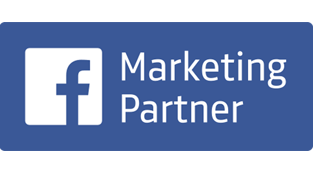Evolving Landscape of Legal Practice Intake Systems
The legal industry has undergone significant transformation, especially in how law firms manage their intake systems. This shift is crucial since the intake process is often the first interaction a potential client has with a law firm. This article provides a comparative study of the evolution of legal practice intake systems, highlighting how advancements in technology and changing client expectations have reshaped this fundamental process.

The Traditional Intake System: A Retrospective
Manual Processes and Limitations
Traditionally, legal intake systems were heavily reliant on manual processes. This included paper forms, physical files, and direct phone calls or face-to-face meetings for initial consultations. While these methods had a personal touch, they were often time-consuming, prone to errors, and challenging to scale for growing practices.
Client Experience and Efficiency
The client experience in these traditional systems was often less efficient. Potential clients had to navigate through multiple steps, from making phone calls to filling out lengthy forms, before even speaking to an attorney.
Transition to Digital: The Modern Intake System
Adoption of Technology
The advent of digital technology has revolutionized legal intake systems. Law firms have begun adopting various technologies, such as online forms, CRM (Customer Relationship Management) systems, and automated scheduling tools, to streamline their intake processes.
Improved Accessibility and Convenience
These technological advancements have made legal services more accessible. Clients can now easily find information online, fill out forms at their convenience, and schedule consultations without the back-and-forth of phone calls.
Comparative Analysis: Then and Now
Efficiency and Accuracy
- Then: The manual intake process was often slow and prone to clerical errors.
- Now: Digital intake systems have significantly improved efficiency and reduced the chances of data entry errors.
Client Experience
- Then: Clients often experienced delays and a lack of transparency in the intake process.
- Now: Modern systems offer a more user-friendly and transparent experience, with faster response times and clearer communication.
Data Management and Analytics
- Then: Data collected from clients was often unstructured and challenging to analyze.
- Now: Digital systems allow for the collection of structured data, enabling better client analytics and insights.
Scalability and Adaptability
- Then: Scaling up intake processes was challenging due to the reliance on manual work.
- Now: Modern systems are more adaptable and can easily scale with the growth of the law firm.
Cost and Resource Allocation
- Then: More resources were needed for managing intake, from personnel to storage space for files.
- Now: Digital systems have reduced the need for excessive resources, allowing law firms to allocate their budget more effectively.
The Role of AI and Automation in Modern Intake Systems
Automated Client Communication
Automation tools and AI have enabled automated and personalized communication with clients, from initial contact to setting up appointments.
Predictive Analytics
AI-driven analytics can predict client trends and preferences, helping law firms tailor their services more effectively.
Challenges in the Digital Transformation
Integrating New Technologies
Transitioning to digital systems can be challenging, especially for established law firms accustomed to traditional methods.
Balancing Personal Touch with Automation
While technology has made processes more efficient, maintaining a personal touch in client interactions remains crucial.
Future Trends in Legal Intake Systems
Continued Integration of AI and Machine Learning
The use of AI and machine learning is expected to grow, further automating and personalizing the intake process.
Increased Focus on Client-Centric Systems
Future developments are likely to focus more on enhancing the client experience, making intake systems even more client-centric.
Conclusion
The evolution of legal practice intake systems from traditional to modern digital processes represents a significant shift in the legal industry. This transition has enhanced efficiency, improved client experience, and provided better data management, albeit with challenges such as integrating new technologies and maintaining a personal touch.
For law firms looking to evolve their intake processes or seeking guidance on best practices in this new digital landscape, apply for your FREE Discovery Call. Embrace the changing landscape of legal practice intake systems and position your firm for success in this dynamic industry.



